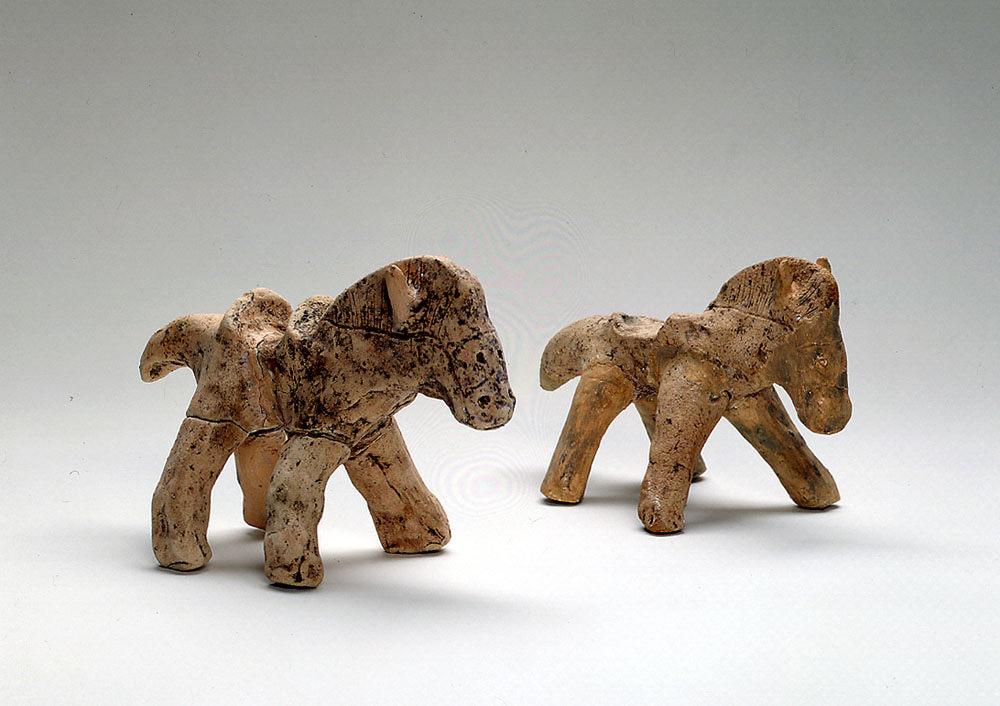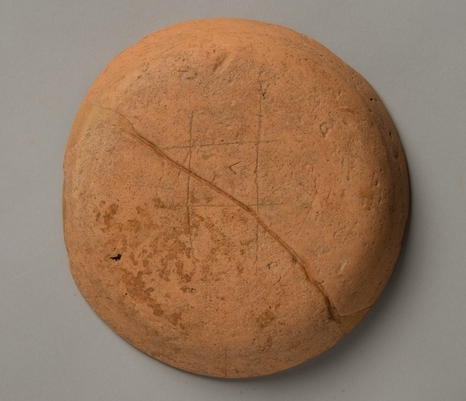Rituals at the Saiku
Rituals at the Saiku
The Saiku was a Shinto sanctuary, so it was most important that the place remain clean and pure for the various Shinto rituals to be carried out. Violence, romantic love, and matters to do with Buddhism were forbidden at the Saiku. The rule at the Saiku was to use specially coded expressions when referring to taboo matters. A Buddhist monk, for instance, was referred to as kaminaga (lit. person with long hair), and “falling ill” was referred to as “taking a rest.”Displayed here are some of the artifacts recovered by archaeological excavations that shed light on the rituals conducted at the Saiku, and the methods by which inhabitants made wishes and offered prayers.
Clay horses and earthenware vessels painted with images of human faces are thought to have been employed for rituals for cleansing “impurities.” The clay horses were also likely used for rainmaking rituals.
Doba (clay horse figurines)
 Horse figurines made of fired clay have been found at many ancient ruins across Japan. It is not known exactly how they were used. Some think they were used as substitutes for real horses that were sacrificed for rainmaking rituals, while others suggest they were “scapegoats” that were banished after being made to bear away all plagues. Various types of clay horse figurines have turned up at the Saiku site as well.
Horse figurines made of fired clay have been found at many ancient ruins across Japan. It is not known exactly how they were used. Some think they were used as substitutes for real horses that were sacrificed for rainmaking rituals, while others suggest they were “scapegoats” that were banished after being made to bear away all plagues. Various types of clay horse figurines have turned up at the Saiku site as well.
Talismanic symbols
 Archaeological excavations at the Saiku site occasionally yield earthenware objects inscribed with various symbols. Relatively common ones include crisscross lines similar to the hash (#) symbol, and pentagrams drawn in single strokes. It is thought that these symbols acted as charms for creating magical barriers against evil spirits. The custom of using certain symbols as charms can still be found in parts of Mie Prefecture today.
Archaeological excavations at the Saiku site occasionally yield earthenware objects inscribed with various symbols. Relatively common ones include crisscross lines similar to the hash (#) symbol, and pentagrams drawn in single strokes. It is thought that these symbols acted as charms for creating magical barriers against evil spirits. The custom of using certain symbols as charms can still be found in parts of Mie Prefecture today.
